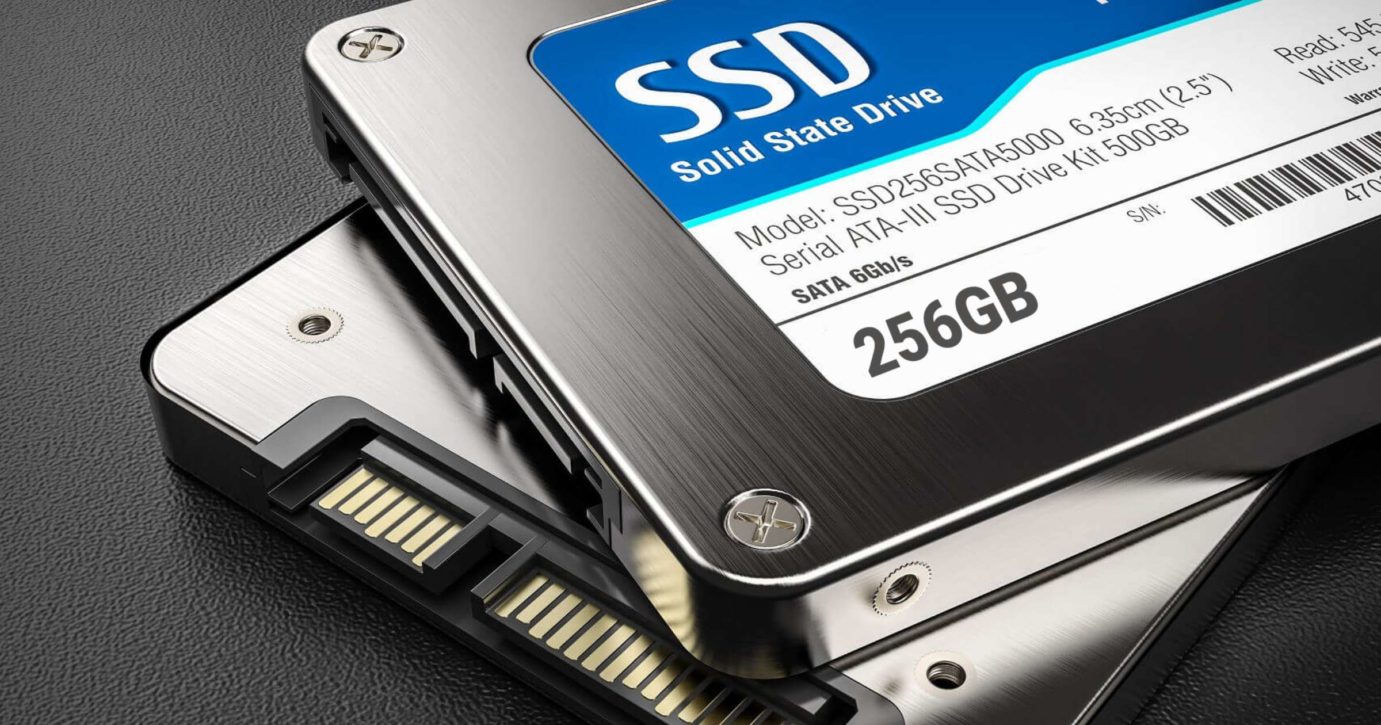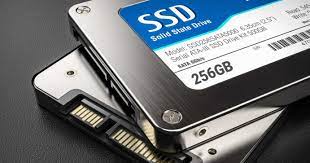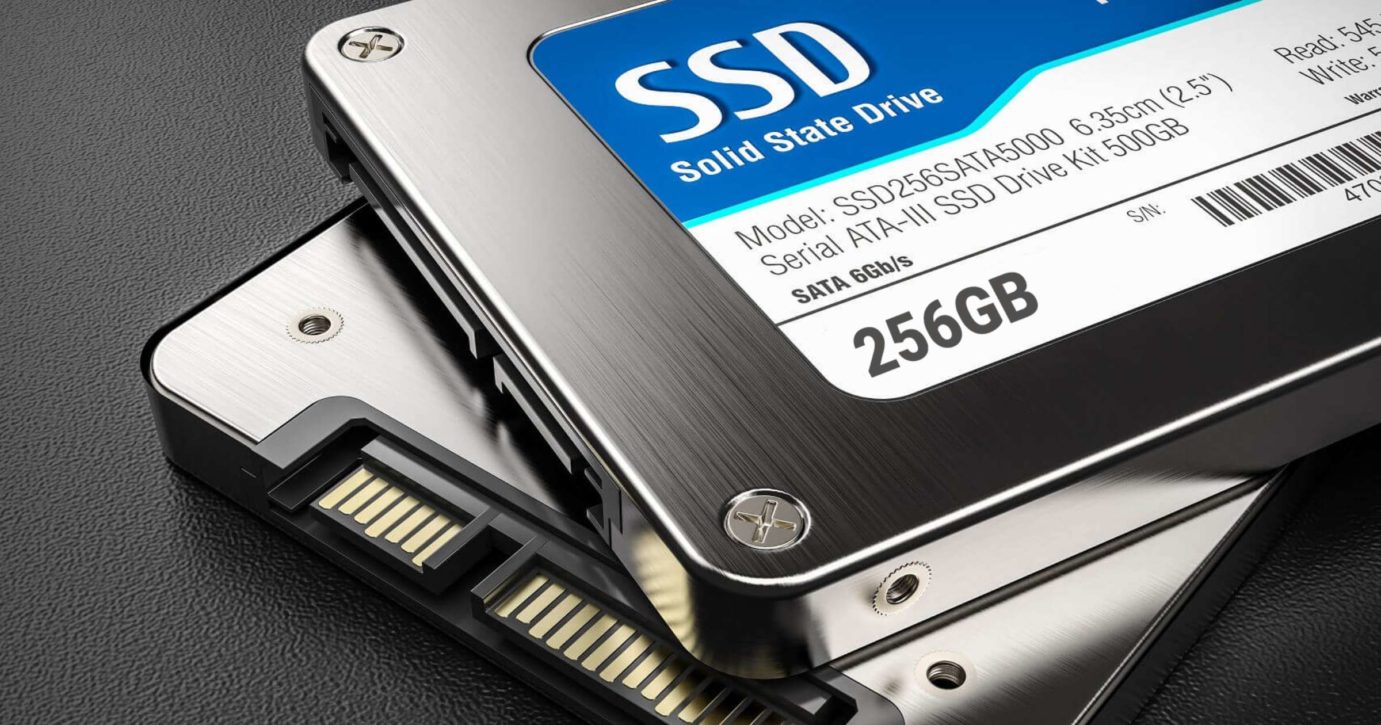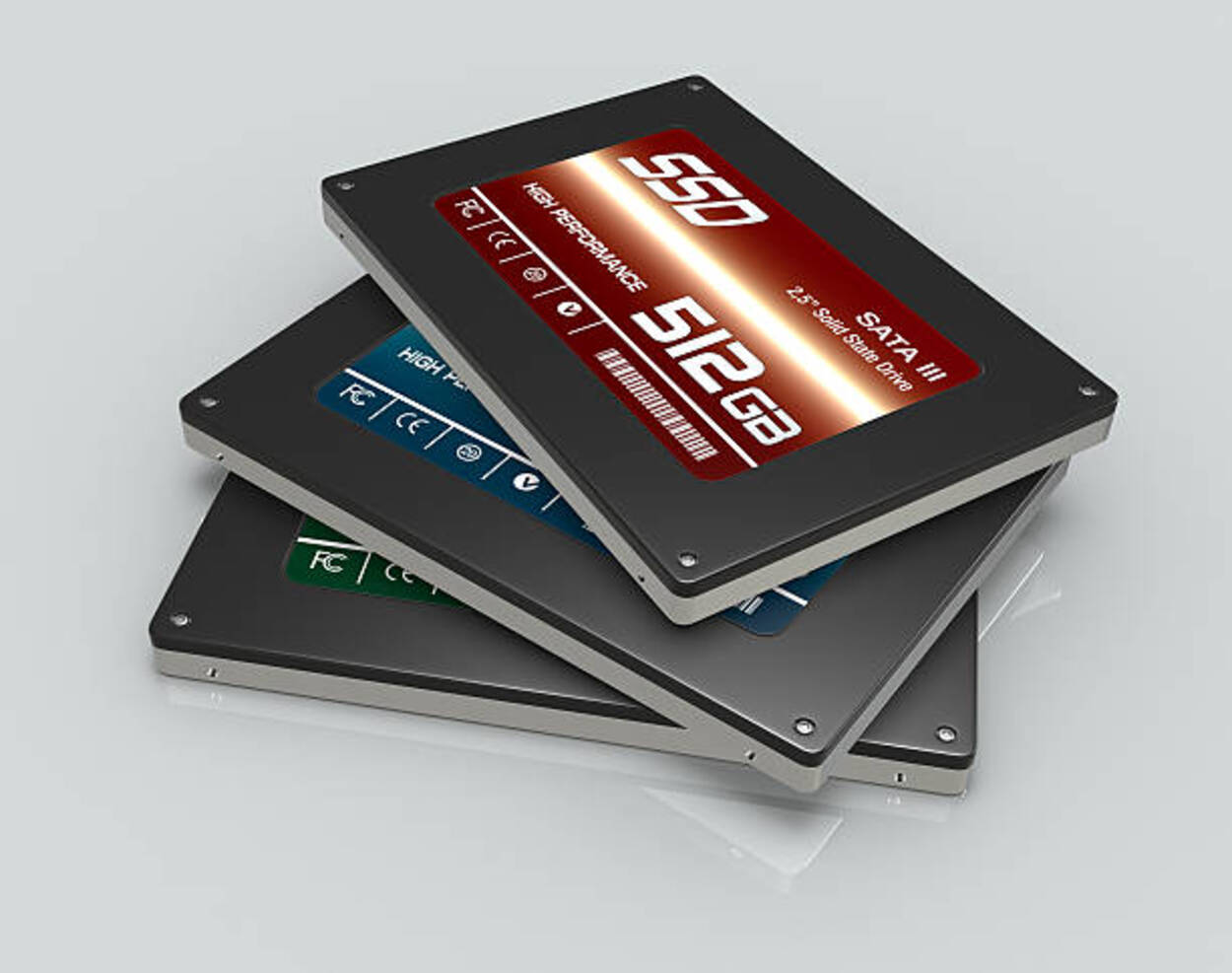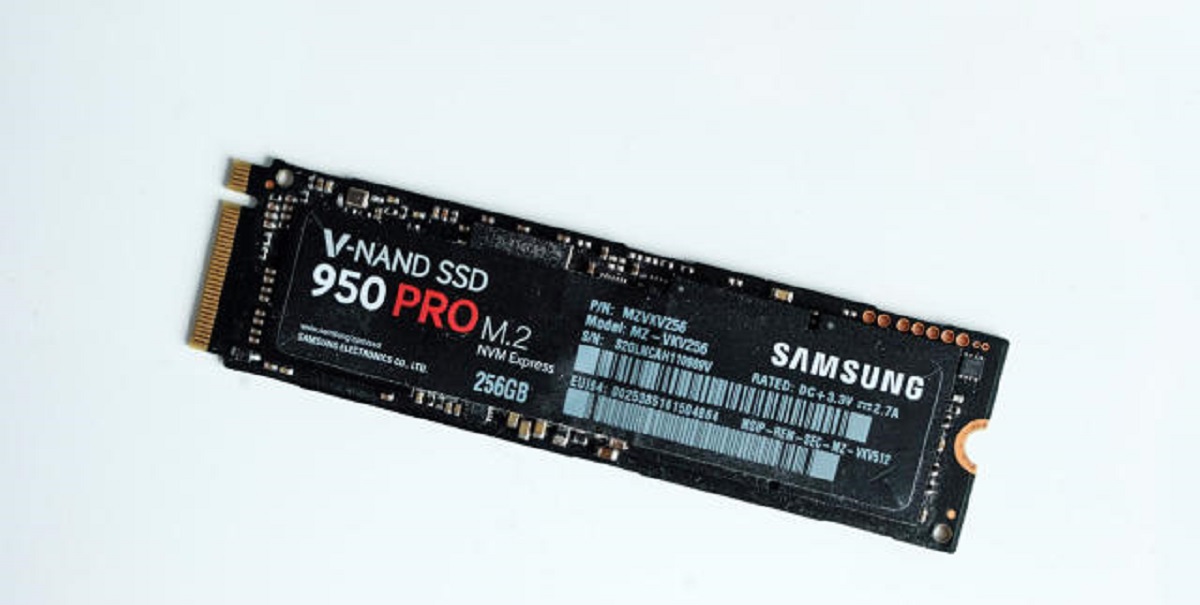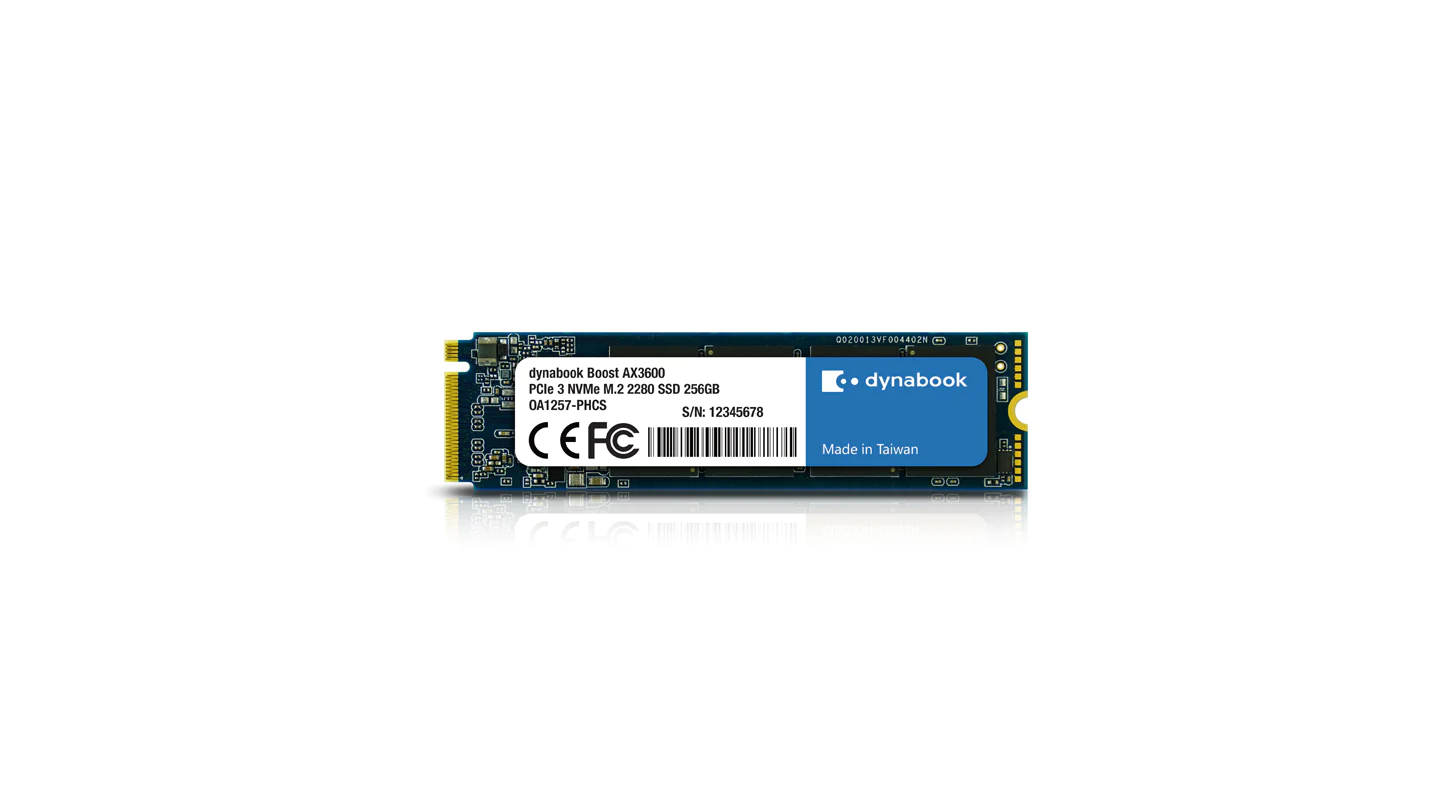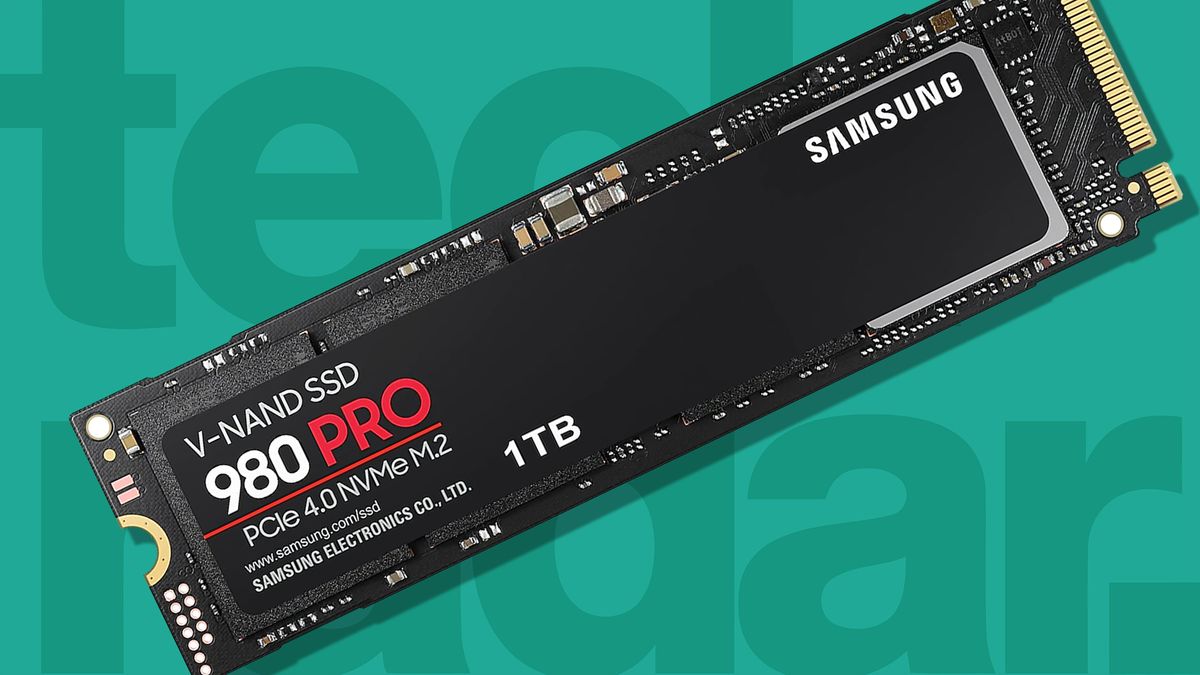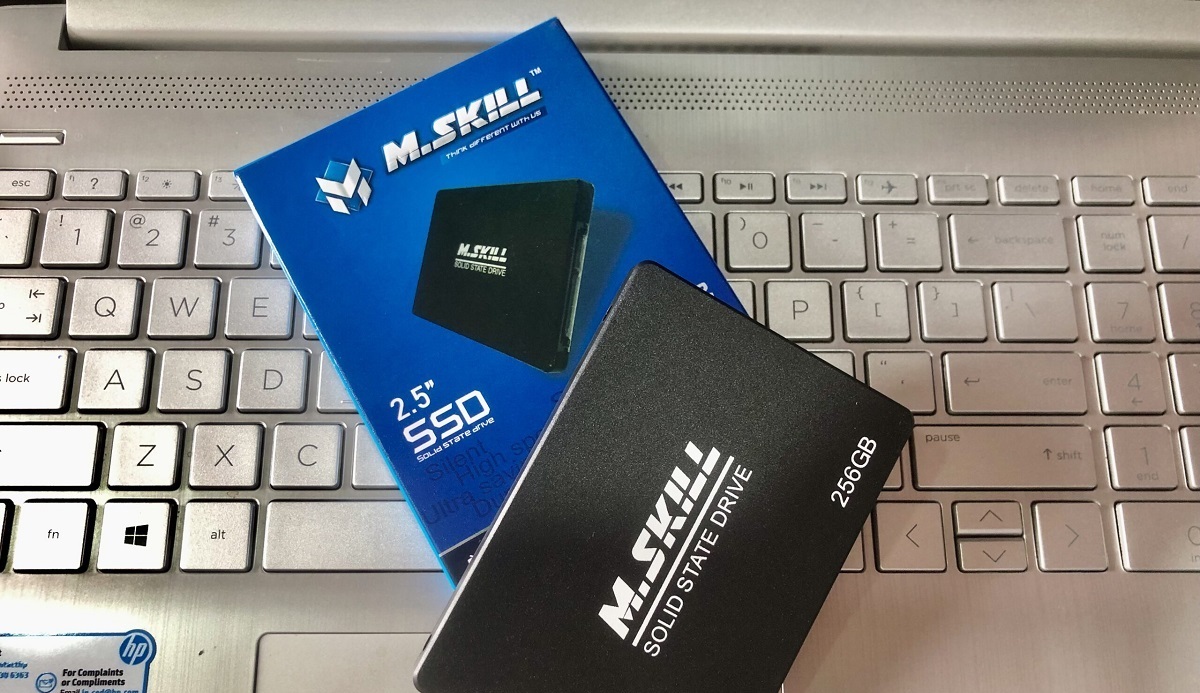Introduction
Welcome to our comprehensive guide on SSD storage, where we will delve into the world of Solid State Drives and specifically focus on the popular 256GB variant. In this digital age, storage is a fundamental aspect of our daily lives, whether it’s for personal use or professional needs. With the abundance of data we generate, it’s crucial to understand the various options available to ensure we have enough space to store our files and documents.
SSD stands for Solid State Drive, and it is a revolutionary technology that has transformed the way we store and access data. Unlike traditional hard drives, which contain spinning platters and moving parts, SSDs utilize flash memory to store and retrieve information. This distinctive characteristic brings with it a range of advantages, from faster read and write speeds to increased durability and improved power efficiency.
One of the key considerations when shopping for SSD storage is the capacity, and the 256GB variant is a popular choice for many users. It strikes a balance between affordability and ample storage space, making it suitable for a variety of needs, including everyday use, gaming, multimedia editing, and more.
In this guide, we will explore the benefits of SSD storage, the different types available, and understand the capacity of a 256GB SSD, followed by real-life examples of how much data it can hold. We will also discuss the factors that influence the price of 256GB SSD storage and compare prices from different brands. Finally, we will help you determine if 256GB SSD storage is enough for your requirements.
So, if you’re ready to dive into the world of SSD storage and discover how much 256GB can hold, let’s get started!
What is SSD Storage?
SSD storage, short for Solid State Drive storage, is a cutting-edge technology that has revolutionized the way we store and access data. Unlike traditional hard drives, which rely on spinning platters and mechanical components, SSD storage utilizes flash memory to store and retrieve information. This means that instead of relying on moving parts, SSDs use integrated circuits to store data electronically.
One of the key advantages of SSD storage is its speed. With no moving parts to mechanically locate and access data, SSDs can read and write information at significantly faster speeds compared to traditional hard drives. This results in faster boot times, quicker file transfers, and reduced load times for applications and games.
Another notable benefit of SSD storage is its durability. Because there are no moving parts that can be susceptible to wear and tear, SSDs are more resistant to shock and vibration. This makes them an ideal choice for laptops and portable devices, where data integrity is crucial, especially when on the move.
In addition to speed and durability, SSD storage also offers improved power efficiency. As SSDs consume less power than traditional hard drives, they contribute to longer battery life for laptops and reduced energy consumption for desktops. This not only benefits users in terms of extended usage time but also contributes to a greener and more eco-friendly computing experience.
Furthermore, SSD storage is whisper-quiet. Unlike traditional hard drives that emit noise from the spinning platters and moving parts, SSDs have no moving components, resulting in a silent operation. This makes them well-suited for environments where low noise levels are desired, such as recording studios or quiet office spaces.
Overall, SSD storage offers a range of advantages over traditional hard drives, including faster speeds, enhanced durability, improved power efficiency, and silent operation. These benefits have made SSDs the preferred choice for many users who require high-performance storage for their everyday computing needs.
Benefits of SSD Storage
SSD storage offers a host of benefits over traditional hard drives, making it a game-changer in the world of data storage. Whether you’re a casual user or a professional, understanding the advantages of SSD storage can help you make an informed decision when it comes to choosing the right storage solution for your needs. Here are some key benefits of SSD storage:
- Faster Performance: One of the most significant advantages of SSD storage is its speed. With no spinning platters or moving parts, SSDs can access and retrieve data much faster than traditional hard drives. This results in quicker boot times, faster application launches, and snappy file transfers.
- Improved Reliability: SSDs are more reliable than traditional hard drives due to their lack of moving parts. This means they are less prone to mechanical failures and data loss caused by physical damage or vibration. SSDs are an excellent choice for users who require a dependable and robust storage solution.
- Enhanced Durability: The absence of moving components in SSD storage makes it highly durable. Unlike traditional hard drives, SSDs can withstand shocks and vibrations, making them ideal for portable devices such as laptops. Whether you’re a frequent traveler or constantly on the go, SSD storage ensures the safety of your data.
- Energy Efficiency and Longer Battery Life: SSDs consume less power compared to traditional hard drives. This results in improved energy efficiency, reduced heat generation, and longer battery life for laptops and other portable devices. With SSD storage, you can enjoy prolonged usage without worrying about frequent charging or compromising performance.
- No Noise: SSDs operate silently due to their lack of moving parts. Unlike traditional hard drives that produce noise from spinning platters and mechanical components, SSDs offer a noise-free storage solution. This is particularly beneficial in environments where silence is necessary, such as recording studios or quiet office spaces.
- Compact Form Factor: SSDs are compact and lightweight, making them ideal for smaller devices where space is a constraint. Their slim profile and small form factor allow them to fit seamlessly into ultra-thin laptops, compact desktops, and other devices where size matters.
- Shock Resistance: SSDs have excellent shock resistance, which means they can withstand accidental drops and impacts without compromising data integrity. This is especially valuable for users who handle their devices roughly or work in demanding environments.
Overall, SSD storage offers numerous advantages over traditional hard drives, including faster performance, improved reliability, enhanced durability, energy efficiency, silent operation, compact form factor, and shock resistance. These benefits make SSDs an excellent investment for anyone looking for reliable and high-performance storage for their computing needs.
Different Types of SSD Storage
SSD storage comes in various types, each with its own unique characteristics and features. Understanding the different types of SSD storage can help you choose the right one based on your specific requirements and budget. Here are the most common types of SSD storage:
- SATA SSD: SATA (Serial ATA) SSDs are the most widely used and affordable type of SSD storage. They connect to the motherboard using the standard SATA interface, making them compatible with most computers and laptops. While SATA SSDs offer improved performance compared to traditional hard drives, they have slower read and write speeds compared to other types of SSD storage.
- PCIe SSD: PCIe (Peripheral Component Interconnect Express) SSDs are high-performance storage devices that connect directly to the motherboard via the PCIe interface. These SSDs offer significantly faster read and write speeds compared to SATA SSDs, making them ideal for tasks that require intensive data processing, such as gaming or multimedia editing. PCIe SSDs are more expensive than SATA SSDs but provide a significant boost in performance.
- NVMe SSD: NVMe (Non-Volatile Memory Express) SSDs are a subset of PCIe SSDs that utilize the NVMe protocol for enhanced performance. NVMe SSDs offer the fastest read and write speeds among all SSD storage types, making them the top choice for demanding applications and workloads. These SSDs are more expensive than SATA and PCIe SSDs but deliver unparalleled performance and responsiveness.
- M.2 SSD: M.2 SSDs are a compact form factor of SSD storage that connect directly to the motherboard using the M.2 slot. These SSDs are available in both SATA and PCIe variations, allowing you to choose the type that suits your needs. M.2 SSDs are ideal for laptops and small form factor desktops due to their space-saving design.
- External SSD: External SSDs are portable storage devices that connect to your computer via USB or Thunderbolt interfaces. These SSDs offer the convenience of expandable storage and can be easily connected to different devices. External SSDs are perfect for users who require additional storage capacity or need to transfer large files between computers.
- Enterprise SSD: Enterprise SSDs are designed for server and data-center use. These SSDs prioritize reliability, endurance, and data protection, making them suitable for high-performance computing environments. Enterprise SSDs often come with advanced features such as power loss protection and data encryption.
When choosing the right type of SSD storage, consider factors such as your budget, desired performance, compatibility with your system, and the specific use-case. Assessing your needs and understanding the differences between these types of SSD storage will ensure you make an informed decision and obtain the best possible performance and reliability for your data storage requirements.
Understanding Capacity
Capacity is a vital factor to consider when choosing SSD storage. It determines how much data you can store on your drive, whether it’s documents, photos, videos, or applications. Understanding capacity will help ensure that you select the right SSD storage solution that meets your storage needs. Here are some key points to consider:
Base 10 vs. Base 2 Capacity: Capacity is often represented in base 10 or base 2 units. In the base 10 system, 1 gigabyte (GB) is equal to 1,000 megabytes (MB), while in the base 2 system, 1 gibibyte (GiB) is equal to 1,024 mebibytes (MiB). This means that a 256GB SSD will have a base 10 capacity of 256 billion bytes and a base 2 capacity of around 238 gibibytes.
Formatted Capacity: The formatted capacity refers to the actual usable space on the SSD after formatting and the operating system’s file system overhead. Due to formatting and other factors, the formatted capacity is slightly less than the advertised capacity. For example, a 256GB SSD may have a formatted capacity of around 240-250GB.
Reserved Space: SSDs utilize a portion of the storage capacity for wear-leveling and other maintenance tasks. This reserved space is essential for maintaining the SSD’s performance and longevity. The amount of reserved space varies depending on the SSD’s firmware and can range from a few gigabytes to a percentage of the total capacity.
Available Capacity: The available capacity is the actual space that you can use to store your files and data. It is the formatted capacity minus any system and reserved space. It’s crucial to consider the available capacity when calculating how much storage you need for your specific requirements.
File Size and Storage Needs: Understanding the size of the files you typically work with and your storage needs will help you determine the appropriate capacity for your SSD. For example, if you work with large media files or have extensive software requirements, you may require a larger capacity SSD to accommodate your data.
Future Expansion: It’s essential to consider your future storage needs when selecting an SSD. If you anticipate your data storage requirements increasing in the near future, opting for a higher capacity SSD will save you the hassle of upgrading or adding additional storage later on.
By understanding the different aspects of capacity and considering your current and future storage needs, you can make an informed decision about the size of the SSD that will best suit your requirements. Remember to account for both the advertised capacity and the formatted capacity to ensure you have enough space to store your files and data comfortably.
256GB SSD Storage: How much data can it hold?
When it comes to SSD storage, the capacity of the drive determines how much data you can store on it. A 256GB SSD is a popular choice among users, striking a balance between affordability and ample storage space. But how much data can a 256GB SSD actually hold? Let’s break it down:
In terms of base 2 capacity, a 256GB SSD provides around 238 gibibytes (GiB) of space. This is the measurement commonly used by operating systems and applications. It’s important to recognize the difference between base 2 and base 10 capacities, as the latter is often used in marketing and advertising by drive manufacturers.
The actual amount of data you can store on a 256GB SSD can vary slightly due to formatting and system overhead. After formatting, the available capacity may be around 240-250GB, depending on the file system used and other factors.
So how much data can you store on a 256GB SSD in practical terms? The answer depends on the type and size of the files you are storing. Here are a few examples to give you an idea:
- Around 40,000 high-resolution photos (10MB each)
- Over 5,000 music albums (with an average album size of 50MB)
- Approximately 50 hours of HD video footage (at an average bitrate of 5 Mbps)
- About 40-50 PC games (with an average size of 5-6GB each)
- Several large software applications or suites
It’s important to note that these examples are approximate calculations, and the actual number of files you can store will depend on various factors such as file compression, file formats, and the presence of other data or applications on the drive.
Additionally, it’s worth considering the operating system and other software that will be installed on the SSD. These may consume a portion of the storage capacity, reducing the overall available space for personal files.
If you primarily use your computer for basic tasks like web browsing, document creation, and email, a 256GB SSD should provide ample space for your needs. However, if you work with large media files, perform intensive video editing, or have a vast library of games, you may need to consider a larger capacity SSD or use external storage options to accommodate your data.
Ultimately, the amount of data a 256GB SSD can hold will vary depending on individual requirements and file sizes. Assess your storage needs and consider the types of files you’ll be storing to determine if a 256GB SSD is sufficient for your specific use case.
Real-Life Examples of 256GB SSD Storage Usage
Having a 256GB SSD provides a significant amount of storage capacity for most users, offering enough space to store a variety of files and applications. To better understand how people utilize a 256GB SSD in real-life scenarios, let’s explore some examples:
- The Casual User: For the casual user who primarily uses their computer for web browsing, email, and basic document editing, a 256GB SSD is more than sufficient. It can hold a substantial amount of personal photos, music collections, and essential documents without any issues. Additionally, casual gamers who don’t have an extensive library of games can comfortably store their favorite titles on the drive.
- The Content Creator: Content creators who work with multimedia files such as photos, videos, and audio recordings usually require more storage space. However, a 256GB SSD can still be of great use to them. They can use the SSD to store current projects or frequently accessed files, while utilizing external storage options or cloud services for archival purposes.
- The Student or Professional: Students and professionals who rely heavily on productivity software, documents, and presentations can benefit from a 256GB SSD. The drive can comfortably accommodate a comprehensive collection of files, software applications, and even some light video or photo editing projects. As with other users, external storage options can be used for long-term archival and backup purposes.
- The Gamer: 256GB may seem limited for avid gamers with a vast library of games. However, with careful management and prioritization, a 256GB SSD can store a decent number of games. Frequent gamers may opt to uninstall and reinstall games as needed, prioritizing the ones they play the most. Alternatively, they can utilize external storage or secondary drives for additional game storage.
- The Professional on the Go: Professionals who frequently travel or work remotely can benefit from a 256GB SSD in their laptops. The drive provides ample space for essential software, presentations, documents, and even a selection of media files. Cloud storage solutions can be leveraged for accessing additional files while on the go.
Remember, the specific usage and storage requirements will vary from person to person. It’s important to consider your own needs and prioritize the files and applications that are most important to you. A 256GB SSD can be a versatile and practical storage solution for many individuals, offering a balance between affordability, performance, and capacity.
If you find that your storage needs exceed the capacity of a 256GB SSD, you can always consider alternative solutions such as external drives, network-attached storage (NAS), or cloud storage services to supplement your storage requirements.
Factors Affecting the Price of 256GB SSD Storage
The price of 256GB SSD storage can vary depending on several factors. Understanding these factors will help you make an informed decision when purchasing an SSD and ensure that you get the best value for your money. Here are some key factors that can influence the price of 256GB SSD storage:
- Brand: Well-established brands often command higher prices due to their reputation for quality and reliability. However, lesser-known or budget-friendly brands can offer competitive options that provide similar performance and reliability at a lower cost.
- Technology and Performance: The specific technology used in the SSD and its performance capabilities can impact the price. SSDs with faster read and write speeds, higher endurance, and advanced features like hardware encryption or power loss protection may come at a premium compared to entry-level or lower-performing models.
- Interface: The type of interface the SSD uses can also affect the price. SATA SSDs, being the most common and widely compatible, are generally more affordable compared to PCIe or NVMe SSDs, which offer higher performance but come at a higher cost.
- Quality of Components: The quality of the components used in the SSD, including the NAND flash memory and controller, can impact the price. Higher-quality components can provide better performance, reliability, and endurance, but they tend to drive up the overall cost of the SSD.
- Warranty: Longer warranty periods are often associated with more expensive SSDs. Extended warranties provide peace of mind and indicate the manufacturer’s confidence in the product’s durability and reliability.
- Supply and Demand: Like any product, SSD prices can be influenced by supply and demand dynamics. During periods of high demand or shortages in the market, prices may increase. Conversely, when supply exceeds demand, prices may drop due to increased competition.
- Special Features: SSDs with additional features, such as RGB lighting, heat sinks for improved thermal management, or software suites for monitoring and optimization, may be priced higher than basic models without these extras.
- Market Conditions: Market conditions, including currency exchange rates, trade tariffs, and economic factors, can impact the pricing of SSD storage, especially for global manufacturers who import or export their products.
It’s essential to consider these factors and prioritize your requirements when deciding on a 256GB SSD. Assess your budget and determine which features, performance levels, and warranty durations are important to you. Researching and comparing different brands and models will help you find the best balance between price and performance for your specific needs.
Lastly, keep in mind that SSD prices can fluctuate over time as technology advances and new models are released. When purchasing an SSD, it’s worth considering if the price justifies the performance and features provided, as SSD technology continues to evolve.
Comparing Prices of 256GB SSD Storage from Different Brands
When shopping for a 256GB SSD, comparing prices from different brands is essential to ensure you’re getting the best value for your money. While the performance and features of an SSD are important, it’s equally important to consider the pricing and reputation of the brand. Here’s a look at how prices may vary among different brands:
Established Brands: Well-known and established brands such as Samsung, Western Digital, Crucial, and Kingston tend to offer higher-priced SSDs. These brands have a reputation for quality, reliability, and performance, which often justify the higher price tag. Additionally, these brands often invest in research and development to innovate their products, which can contribute to increased costs.
Budget-Friendly Brands: There are also budget-friendly brands in the market that offer competitive prices for 256GB SSDs. These brands may not have the same level of recognition as established brands but can still provide reliable and satisfactory performance. Some examples include Adata, SanDisk, Silicon Power, and TeamGroup. While their SSDs may be more affordable, it’s still important to consider customer reviews and product specifications to ensure they meet your specific requirements.
Sale and Promotional Offers: Keep an eye out for periodic sales and promotional offers from various brands. SSD prices can fluctuate, and it’s not uncommon for brands to offer discounts or bundle deals to attract customers. These sales can provide an opportunity to get a high-quality 256GB SSD from reputable brands at a more affordable price.
Online Marketplaces: Online marketplaces such as Amazon, Newegg, and Best Buy often feature a wide range of SSDs from different brands. Comparing prices on these platforms can help you find competitive deals and discounts. Additionally, user reviews and ratings can provide valuable insights into the performance and reliability of SSDs from different brands.
Refurbished or Used Options: Another option to consider when comparing prices is refurbished or used SSDs. These SSDs have been previously owned but are thoroughly tested and restored to working condition. Refurbished or used SSDs can be significantly cheaper compared to brand new ones, but it’s important to verify the seller’s reputation and the warranty coverage, if any.
When comparing prices, be sure to consider factors such as warranty coverage, performance specifications, and customer support. While affordability may be a priority, it’s essential to strike a balance between price and overall quality to ensure a satisfactory experience with your 256GB SSD.
Remember, the cheapest option may not always be the best choice, as SSD performance and reliability can vary among different brands. Take the time to research and compare prices, read customer reviews, and consider your specific needs to make an informed decision and select an SSD from a reputable brand that offers the right balance between price and performance.
Is 256GB SSD Storage Enough for You?
Deciding whether 256GB SSD storage is enough for your needs depends on various factors, including your usage patterns, the type of data you work with, and your overall storage requirements. While 256GB may be sufficient for some users, others may find it inadequate. Here are some considerations to help you determine if 256GB SSD storage is enough for you:
Usage Patterns: Assess how you primarily use your computer. If you mainly browse the web, check emails, and perform basic tasks, 256GB should offer ample storage space for your needs. However, if you work with large multimedia files, engage in intensive gaming, or require extensive software installations, you may need more storage capacity.
File Types and Sizes: Consider the types and sizes of files you work with. High-resolution photos, videos, and large software applications can quickly consume storage space. Determine the average file sizes and factor in whether you engage in activities like video editing, graphic design, or gaming, which often require more storage capacity.
Multiple Drives or External Storage: If you have access to additional storage options, such as secondary drives, external hard drives, or cloud storage services, you can supplement the 256GB SSD to accommodate your needs. Offloading infrequently accessed files to external storage can free up space on the SSD, making the capacity more manageable.
Cloud Storage and Streaming: With the rise of cloud-based services and streaming platforms, you may opt to store certain files, such as documents, photos, and music, in the cloud rather than on local storage. This can help reduce the need for extensive SSD space if you have reliable internet access and are comfortable relying on cloud storage and streaming services.
Future Growth and Flexibility: Consider your future storage needs. If you anticipate your storage requirements increasing significantly or plan to engage in activities like video recording, 3D rendering, or data-intensive work, it may be beneficial to opt for a higher capacity SSD to ensure smooth and uninterrupted workflows.
Budget: Your budget is an important factor as SSD prices increase with larger capacities. If you’re cost-sensitive and have a limited budget, a 256GB SSD may present the right balance between affordability and functionality, especially when combined with external storage options.
Ultimately, the suitability of 256GB SSD storage depends on your specific needs and usage patterns. It’s crucial to evaluate your storage requirements, consider the types of files you work with, and assess future growth potential. Taking into account additional storage solutions and leveraging cloud storage can help you optimize your available space and make the most of a 256GB SSD.
Remember, if you find that 256GB SSD storage is insufficient, it’s typically possible to upgrade your storage in the future by adding additional SSDs, utilizing secondary drives, or exploring external storage options that meet your evolving needs.
Final Thoughts
Choosing the right storage solution is crucial for optimizing your digital experience, and a 256GB SSD can be an excellent choice for many users. It offers a balance between affordability and ample storage capacity, making it suitable for a wide range of needs, from casual users to professionals.
With its faster performance, enhanced durability, and improved power efficiency compared to traditional hard drives, a 256GB SSD can provide a significant boost to your computer’s overall speed and responsiveness. It provides sufficient space for storing documents, photos, music, and even a selection of games or applications.
However, it’s important to assess your specific requirements when considering a 256GB SSD. Factors such as usage patterns, file types and sizes, and future growth potential need to be taken into account to determine if the capacity is adequate for your needs. Additionally, utilizing external storage options, cloud services, or secondary drives can further enhance your storage capabilities.
When comparing prices and brands, consider factors such as performance, warranty, and customer support to ensure a reliable and satisfactory experience with your 256GB SSD. Remember that affordability should not be the sole determining factor; focus on finding the right balance between price, performance, and overall quality.
Lastly, keep in mind that technology continues to evolve, and storage requirements may increase over time. Regularly reassess your needs and consider future growth potential to ensure that your storage solution remains suitable and adaptable to changing demands.
Overall, a 256GB SSD can provide a significant upgrade to your storage capabilities, delivering faster performance, increased durability, and improved power efficiency. Evaluate your specific needs, compare prices and brands, and make an informed decision to choose the 256GB SSD that best suits your requirements. Embrace the benefits of SSD storage and enjoy a faster, more efficient computing experience!







